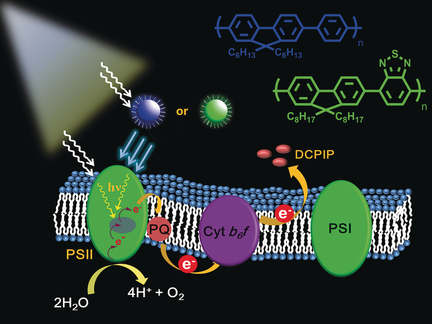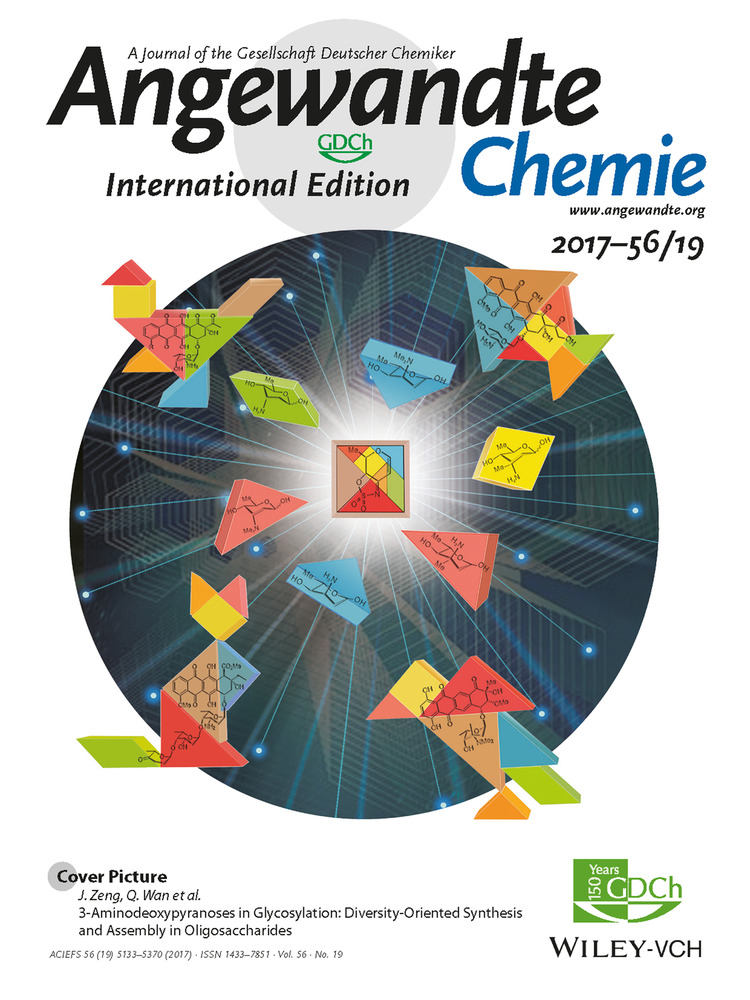Conjugated Polymer Nanoparticles to Augment Photosynthesis of Chloroplasts
Graphical Abstract
A new bio-optical hybrid photosynthesis system is developed by coating chloroplasts with conjugated polymer nanoparticles (CPNs). Since CPNs can harvest ultraviolet light that chloroplasts absorb less, chloroplast/CPN complexes capture a broader range of light to accelerate electron transport rates in photosystem II (PS II) and augment photosynthesis beyond natural chloroplasts. DCPIP=2,6-dichlorophenolindophenol dye, PQ=plastoquinone.
Abstract
By coating chloroplasts with conjugated polymer nanoparticles (CPNs), a new bio-optical hybrid photosynthesis system (chloroplast/CPNs) is developed. Since CPNs possess unique light harvesting ability, including the ultraviolet part that chloroplasts absorb less, chloroplast/CPN complexes can capture broader range of light to accelerate the electron transport rates in photosystem II (PS II), the critical protein complex in chloroplasts, and augment photosynthesis beyond natural chloroplasts. The degree of spectral overlay between emission of CPNs and absorption of chloroplasts is critical for the enhanced photosynthesis. This work exhibits good potential to explore new and facile nanoengineering strategy for reforming chloroplast with light-harvesting nanomaterials to enhance solar energy conversion.





